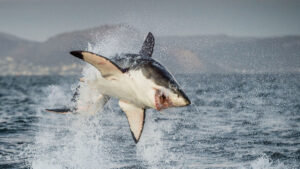In 1906, an American sailor bought an unusual souvenir home from Japan: a mummified “mermaid.” He donated it to Ohio’s Clark County Historical Society, along with documents claiming it was caught in the mid-1800s.
Over 100 years later, researchers have finally taken a closer look at the specimen. The creepy creature seems to be a jumble of fish, monkey, and lizard parts.
The mummy is only 29cm (11.5 inches) long and resembles the famed Fiji mermaid hoax that P.T. Barnum set up in the 1840s. The showman displayed the fake mermaid across America to great success. He even had a bogus naturalist give lectures proclaiming that mermaids were real. Arguing by analogy, he pointed out that just as we have seahorses and sea lions, these were the sea’s version of humans.
Of course, nothing about the so-called mermaid was real. It was the head and torso of a monkey attached to the body of a fish.

Photo: Clark County Historical Society at the Heritage Center
Komodo dragon hands
Researchers were keen to discover if the most recent mermaid mummy was created in a similar fashion. Using X-rays and CT scans, they analyzed the withered remains. There are a number of similarities with the Fiji mermaid. This one also seems to have been created by sewing the head and upper body of a monkey onto the body and tail of a fish.
Wooden poles run across the upper back from shoulder to shoulder, and down the body from head to tail to hold it in position. The main difference is that this one also had clawed hands, which the team suspects come from a Komodo dragon. The researchers hope to enlist zoos and aquariums to identify the exact species used in the wizened little mermaid.

Photo: Fiji Mermaid Project/Joseph Cress
This is the second Japanese mermaid mummy to hit the headlines in as many years. In 2022, researchers came across a different mummy in the Enju-in Temple in Japan. Again they used X-rays, CT scans, and radiocarbon dating to determine how this Franken-mummy was made.
Unlike the Fiji and the latest mermaids, the Enju-in one was essentially made of papier-mâché. Cloth, paper, and pins formed most of the ersatz creature, while pufferfish skin, teeth, and mammal hair enhanced the ruse.

Photo: Fiji Mermaid Project/Joseph Cress
Not the beautiful sirens of Greek myth
All three were created in the early 1800s. It is unclear where the Fiji mermaid came from — P.T. Barnum said that he procured it from a man in London, but many suspect it was also a Japanese creation.
All three are monstrous and do not remotely resemble the beautiful sirens and mermaids of classical myth. Even so, embodying folklore may be how these shriveled mermaids came to be.
In Japanese mythology, there are ningyo and amabie. The first is a fish-human hybrid, the second resembles mermaids with the beak of a bird. Ningyo bring longevity and good health, while the amabie warn of disease.

Photo: Clark County Historical Society at the Heritage Center
The myths tell us that a woman ate a ningyo and lived for 800 years. It seems that off the back of this idea, crafty fishermen tried out their artistic talents. They created faux-mermaids to sell to those wanting to gain good health, longer lives, or simply a good story to take home with them from overseas.
This mythology is still prevalent in Japan today. During COVID-19, images of ningyo and amabie appeared frequently. Many people prayed to the Enju-in temple mermaid on display. Some even tried to pick off and eat its scales to help them survive the pandemic.






